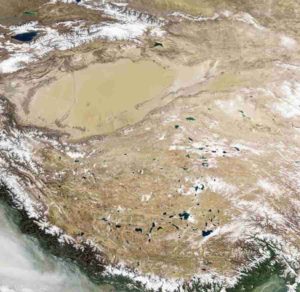
The tectonic deformation and growth pattern of the western Kunlun, which is the northwestern margin of the Tibetan Plateau, are not currently well understood. The surface rupture caused by an earthquake can provide a unique opportunity to investigate the impact of coseismic faulting on landscape evolution, to refine regional deformation models, and to understand future seismic risk.
In a new article for Geosphere, authors Chuanyong Wu and colleagues report the surface deformation caused by the 2015 6.5 magnitude Pishan earthquake based on their field investigations. They utilized geologic data, seismic reflection profiles, and earthquake relocation results to study the seismogenic structure of the Pishan earthquake and the deformation characteristics of the Pishan blind thrust fold. They suggest that the Pishan earthquake is a folding event that occurred in the upper crust.
An important aim of this study, the authors note, is to achieve a better understanding of this folding earthquake, the tectonic deformation pattern, and the large seismic risk in the western Kunlun range, Northwest Tibetan Plateau.
Reference:
Chuanyong Wu et al. The 2015 Ms 6.5 Pishan earthquake, Northwest Tibetan Plateau: A folding event in the western Kunlun piedmont, Geosphere (2019). DOI: 10.1130/GES02063.1
Note: The above post is reprinted from materials provided by Geological Society of America.










